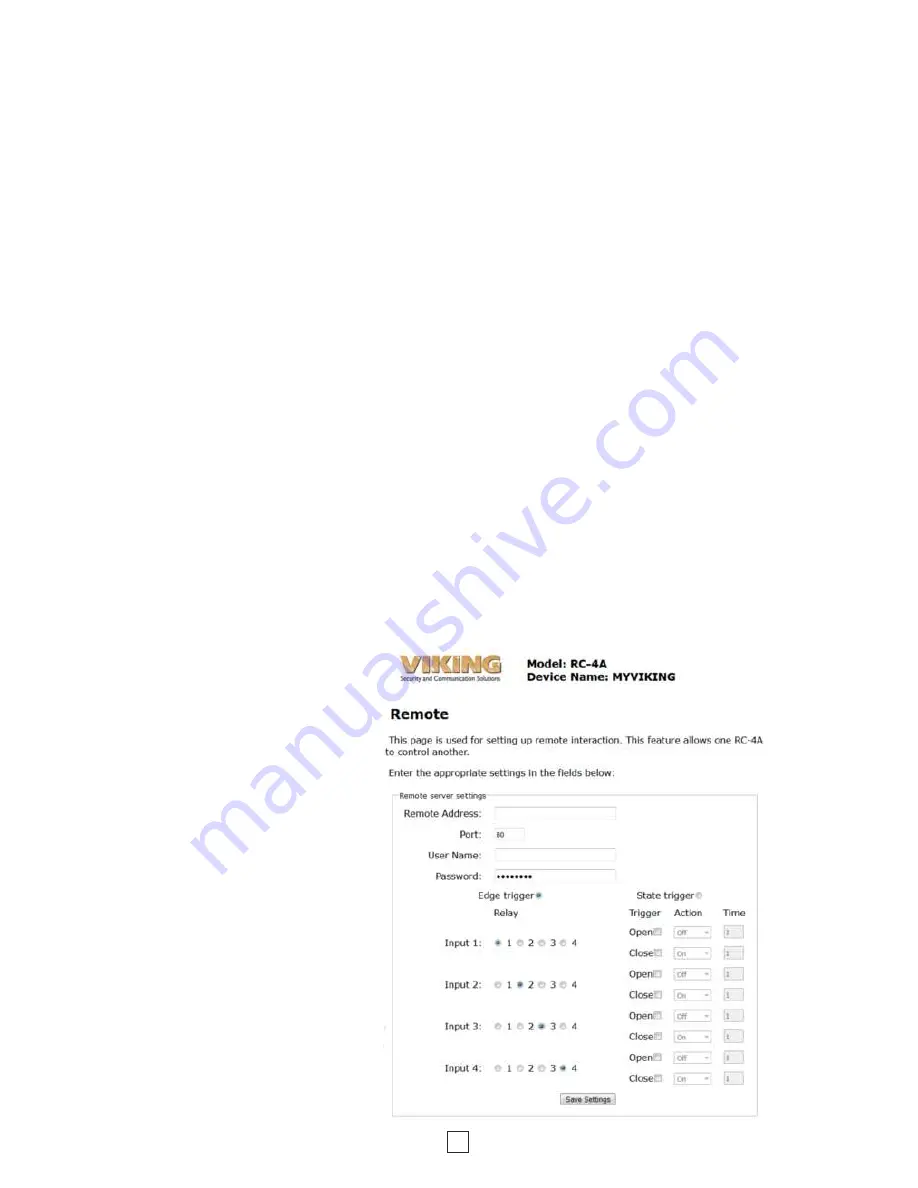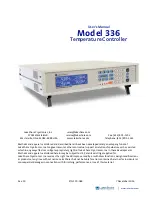
The remaining checkboxes let you decide which inputs will trigger an email notification, and whether an open
contact produces an email, or a closed contact, or both. Note that it is the state change that actually triggers the
email, and the
RC-4A
sends just one email when the state change happens.
Example: Input 1 Opens is checked, Input 1 Closes is unchecked
Assuming that the Input 1 sensor is normally open, an email will be sent when the contact opens. Nothing
will be sent when the contact closes, but once this has happened, an email will be sent when the contact
opens again.
Example: Input 3 Opens is checked, Input 3 Closes is checked
An email is sent when the contact closes, and another email is sent when it opens again. If these state
changes happen just a few seconds apart, more than one notification may be included in a single email.
E. Text Message Notification
The
RC-4A
can also notify you of a change in any of the inputs by sending a text message. Just fill in the textboxes
on the Send E-Mail page (see page 9), but in the To: box for the email destination enter instead the cellphone
number you want to notify along with the cellphone carrier, for example, [email protected]. Here is a partial
list of carriers:
Alltel
AT&T
Boost mobile
Cricket Wireless
MetroPCS
Project Fi
Republic Wireless
Sprint
T-Mobile
U.S. Cellular
Verizon Wireless
Virgin Mobile
If your carrier is not on this list, try contacting them for this information.
F. Remote Interaction
Remote interaction allows one
RC-4A
to control the relays of
another across a network or the
internet in response to activity
on the inputs of the first
RC-4A
.
The first
RC-4A
, referred to as
the controlling unit, is situated
near a device or area to be
monitored. One or more of its
four inputs are connected to
sensors that provide a contact
closure (or open) in response to
certain conditions, for example,
temperature change or a door
being opened. The controlling
unit responds to a contact
closure on one of its inputs by
sending a message to the other
RC-4A
, referred to as the
controlled unit, telling it to
perform a programmed action
on one of its relays. There are
four possible user-programmed
actions: toggle the relay, turn
the relay on, turn the relay off, or
provide a timed relay closure.
At the bottom of the Settings
page, click on Remote
Interaction.
10
































